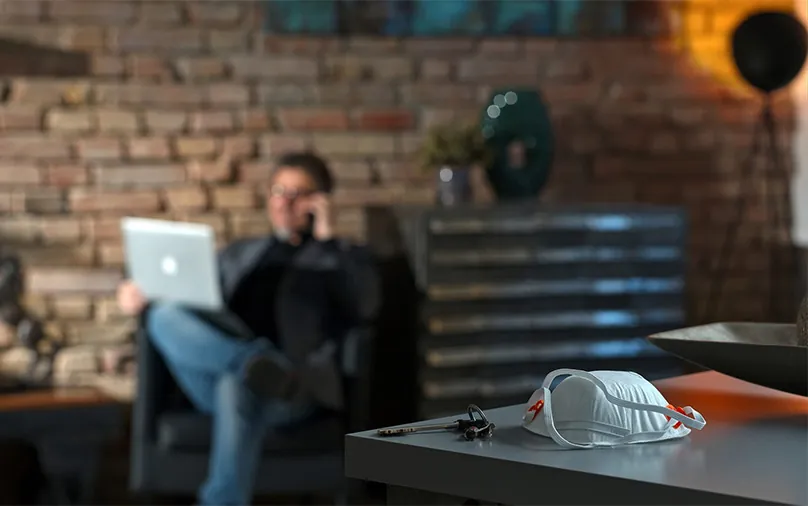Don’t Be Afraid to Ask for the Business

If there’s one thing we’ve stressed (OK, gone on and on about) in our blogs, newsletters, and workshops, it’s that to really make a difference in this business it’s not enough to simply be a sales professional; what you should be striving to be is a trusted advisor.
As a trusted advisor, you’re not out there pawning off swampland to faceless customers, you’re relationship-building. Meaning, you will take that extra step for the customer. Your thoughts, actions, and communication style are all customer-focused. You go out of your way to customize offers, proposing and presenting them in such a way that the customer understands the value proposition you’ve worked hard to add for them.
And yet you still need to do what many sales professionals are uncomfortable doing; ask for business. It’s a necessary task a lot of us dread, but again and again we must put our fear of rejection aside—because part of the job is making the big ask. The good news is, asking for business as a trusted advisor is a much smoother and simpler interaction because it’s just one part of an overall process.
Asking Isn’t Begging
Remember that what you’re asking is not “Will you do this sale with me?” but “Will you help me make your life easier?” Think of it as getting a commitment from your customers and prospective customers to allow you to “solutionize” their need.
Moving Forward
Before even thinking about asking for business, however, you must build credibility with the client, and then present your solutions and how those solutions will benefit the customer. Only then is it time to move the process forward. Because it is a process, it’s not just, one, two, three—bam! “Hi, my name is Sir Sells-a-lot! You wanna buy fun office phones shaped like bananas?”
For example, at the point in the sales cycle where you’ll be moving the process forward, ask the customer question like, “Would you like to move forward with this solution today?” and “Is there anything else you need before we move forward?” In this way, you’ll be shepherding the sales process along, as any good trusted advisor would, and as the customer expects you to. Such close-ended questions are meant to elicit yes or no responses, not the customer’s whole life story. What’s more, they signify to the customer that you’re at that natural point of moving forward.
The Different Faces of Fear
In asking for business, one of the biggest hurdles is fear. And there are a lot of fears to contend with. For starters is the fear of coming off as the classic in-your-face, rude, pushy salesperson. You know, the guy at the mattress store who calls out “Can I help you?!” while you’re still parking your car in the lot, or the won’t-take-no-for-an-answer gal who calls every day trying to upsell the heck out of you in perky tones? We’re sales professionals, but a lot of sales “un-professionals” have gone before us, paving a long and sleazy road that we are mindful not to walk on. Sales folks new to the business may be particularly plagued by fears of coming on too smarmy, based on their own experiences on the other end of the sales equation; for example, dealing with salespeople who trash all the merch they’re selling except the high-priced goods. When you carry out the steps of the sales cycle in a deliberate and thoughtful manner, taking the necessary time to be thorough about each step, there’s no way you will sound pushy when it finally comes to asking for the business.
Timing Your Ask
There is also the fear of a poorly timed ask. It’s a well-founded fear, because if your timing is off, you will not get to yes. Make sure you don’t ask too early on. Articulate the needs of the customer to the customer and clearly explain how you can meet their needs before you ask for their business. What you’re doing is in effect recapping key elements of the sale and the progress you’ve made. The client knows you’ve been listening and have captured a clear understanding of their need. All of this builds confidence in the customer, letting them know that you do in fact have the solution they’ve been looking for. After you take this step, if the customer has a positive reaction to what you’re saying, then you know the time is right to ask for the sale. If you do it too soon, you run the risk of frustrating the customer and losing credibility.
Getting to Know No
The fear of rejection is another biggie, if not the biggest biggie in the biz. But getting to no is normal. It happens to everyone—multiple times, in fact, over the course of your career. Don’t think of a no as a failure. It’s a learning moment—but that’s another story for another time and blog. Just know that if you’re going to make it in this tough racket you have to sport the kind of protective armor that no “no” can pierce. As the old saying goes, it’s just business. And for every no, there’s a yes waiting around the corner. All you have to do is ask. But trust us, trusted advisor, you must go about it the right way!

- Account Planning (12)
- Awards (44)
- Client Testimonial (37)
- Personal Branding (21)
- Podcast (12)
- Research (78)
- Sales Career Development (90)
- Sales Coaching (166)
- Sales Consulting (141)
- Sales Culture (180)
- Sales Enablement (382)
- Sales Leadership (116)
- Sales Management (267)
- Sales Negotiation (14)
- Sales Prospecting (138)
- Sales Role-Playing (19)
- Sales Training (243)
- Selling Strategies (281)
- Soft Skills (78)
- Talent Management (101)
- Trusted Advisor (29)
- Virtual Selling (57)
- Webinar (13)

























